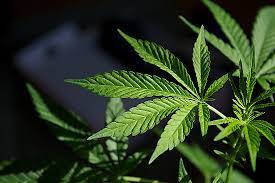From Seed to Sale: The Fascinating Journey of Cannabis Production
In recent years, the landscape of cannabis cultivation and distribution has undergone a remarkable transformation. As legalization sweeps across various regions, the journey from seed to sale has become an intriguing and intricate process. Let’s delve into the fascinating world of cannabis production, exploring each stage with curiosity and insight.
1. The Seed Stage: Nurturing Potential
Everything starts with a seed.gowinwin Cannabis seeds, much like any other plant seeds, contain the genetic blueprint for the entire plant. The first step in cannabis production involves selecting high-quality seeds with the desired characteristics, such as potency, flavor, and growth traits. Breeders carefully cross different strains to create new and unique varieties, catering to the diverse preferences of consumers.
Once the seeds are chosen, they are germinated in a controlled environment. This stage is crucial, as it sets the foundation for the plant’s entire life cycle. The germination process involves exposing the seeds to warmth and moisture, coaxing them to sprout and begin their journey to becoming a mature cannabis plant.
2. The Vegetative Stage: Building Strength and Structure
After germination, the young cannabis plants enter the vegetative stage. This phase is all about growth and development. The plants require a careful balance of light, nutrients, and water to thrive. Cultivators often use specialized lighting systems, such as high-intensity discharge (HID) or light-emitting diode (LED) lights, to simulate the ideal conditions for vigorous growth.
During the vegetative stage, the plants focus on building a robust structure of leaves and stems. Pruning and shaping may occur to encourage optimal growth and to ensure that each plant receives adequate light and air circulation. This stage typically lasts for several weeks, depending on the desired size of the mature plants.
3. The Flowering Stage: Buds and Potency Unleashed
The flowering stage is when cannabis plants truly begin to showcase their potential. In response to changes in light cycles, typically triggered by a shift in the number of hours of darkness, the plants transition from vegetative growth to the production of flowers, or buds. These buds are the prized possessions of the cannabis plant, containing the highest concentration of cannabinoids and terpenes.
During the flowering stage, cultivators pay close attention to environmental factors like temperature and humidity, ensuring optimal conditions for bud development. The timing of harvesting becomes crucial, as it directly impacts the potency and flavor profile of the final product. Cultivators must also consider the plant’s specific strain and the desired effects it is meant to produce.
4. Harvesting: Precision and Timing
Harvesting marks a pivotal moment in the cannabis production journey. The timing of the harvest significantly influences the quality of the final product. Cultivators monitor the trichomes, tiny resin glands on the surface of the buds, to determine the optimal time for harvesting. The color and transparency of these trichomes provide valuable insights into the plant’s cannabinoid and terpene content.
Once the perfect moment arrives, cultivators carefully trim and harvest the buds. This meticulous process ensures the preservation of the delicate trichomes, which contain the cannabinoids responsible for the plant’s therapeutic and psychoactive effects.
5. Drying and Curing: Fine-Tuning Flavor and Potency
After harvesting, the buds undergo a drying and curing process. Drying involves carefully hanging the buds in a controlled environment with proper ventilation to remove excess moisture. This step prevents the growth of mold and preserves the integrity of the cannabinoids and terpenes.
Curing, the subsequent step, is akin to aging fine wine. The dried buds are sealed in containers, allowing them to develop richer flavors and aromas over time. This process not only refines the sensory experience of the cannabis but also enhances its potency and smoothness when consumed.
6. Extraction: Unlocking Cannabinoid Potential
While traditional cannabis consumption involves smoking or vaporizing the dried flower, the industry has witnessed a surge in alternative products. Extraction methods, such as CO2 extraction, ethanol extraction, or hydrocarbon extraction, are employed to isolate cannabinoids and terpenes from the plant material. This allows for the creation of concentrates, oils, tinctures, and edibles that provide diverse consumption options for users.
Extraction processes require a deep understanding of chemistry and technology to ensure the preservation of desired compounds while eliminating unwanted impurities. The resulting extracts can be used to create a wide range of products with precise and consistent cannabinoid profiles.
7. Product Manufacturing: Crafting Diverse Offerings
Once cannabinoids are extracted, they become the building blocks for an array of cannabis products. Skilled manufacturers utilize these components to create edibles, topicals, capsules, and various other products catering to different consumer preferences. The art of product manufacturing lies in achieving accurate dosing, consistent quality, and appealing presentation.
8. Quality Testing: Ensuring Safety and Purity
Before cannabis products reach the market, they undergo rigorous quality testing. Independent laboratories analyze samples to verify potency, screen for contaminants, and confirm the accuracy of labeling. This step is crucial to ensure consumer safety and build trust within the legal cannabis market.
9. Distribution and Retail: Connecting with Consumers
The final leg of the cannabis production journey involves getting products into the hands of consumers. Distribution networks, regulated by local authorities, play a crucial role in transporting cannabis products from manufacturers to retail outlets. Dispensaries, whether physical or online, serve as the gateway for consumers to explore and purchase a diverse range of cannabis offerings.
In the retail space, budtenders, or cannabis consultants, guide customers through product selection, helping them navigate the vast array of strains, formats, and consumption methods. This human touch enhances the overall consumer experience and contributes to the education and destigmatization of cannabis.
10. Consumption: A Personal Journey
Ultimately, the journey from seed to sale culminates in the hands of the end consumer. Whether using cannabis for recreational or medicinal purposes, individuals embark on a personal journey with each product. The diverse range of strains and consumption methods allows users to tailor their experience, finding the perfect match for their preferences and needs.
As cannabis legalization continues to evolve, so too does the intricate tapestry of its production journey. From the careful selection of seeds to the artistry of product manufacturing, the cannabis industry exemplifies the convergence of science, agriculture, and consumer culture. Each stage, with its unique challenges and innovations, contributes to the unfolding narrative of cannabis production, promising a future filled with exploration and discovery.



